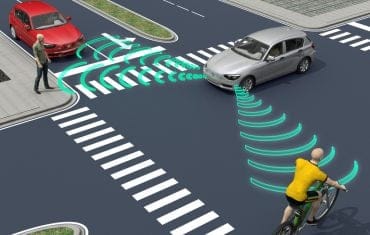
Despite the growth and variety in edge computing device availability, the path toward thin or thick edge isn’t exactly clear.
No one would argue that Internet of Things (IoT) deployments are headed toward the edge. Into more remote, uncontrolled environments, where computers—and especially edge computing power—haven’t traditionally gone before.
Better hardware and connectivity pair together to drive more computer power to the edge, which means organizations can do a lot more work. And that, in turn, is opening up brand-new use cases for organizations that would have never considered this infrastructure. The edge computing industry is maturing to the point where its various hardware, software, and connectivity combinations inevitably create a more fractured environment.
To highlight that degree of change, a Gartner survey of 500 IT leaders showed that their organizations invested, on average, $417,000 on IoT and $262,000 on edge computing throughout 2021. Those figures will inevitably grow, with Grand View Research, Inc. publishing a report stating that the global edge computing market would grow 38% annually through 2028, with a massive focus on edge servers.
One of these divergent paths in edge computing, particularly when it comes to IoT, is thin vs. thick edge deployments, and knowing which one your organization actually needs—or whether the ideal form is a hybrid of the two—will pay dividends when you don’t get bogged down in rework or redeployment costs six months after pushing the power button for the first time.
See also: Manufacturing Ahead of the Curve via AI, 5G, and Edge
Where is the edge between thin and thick?
First thing’s first, we’re focused on IoT-based infrastructure here, not anything related to distributed cloud computing, like content delivery networks (CDNs) or gamelets, which leverage the number of public cloud data centers to process requests closer to their users.
And the thin/thick distinction isn’t a competitive one—both types of edge deployments have many valuable use cases. Think of them as product categories, not philosophies, the way you choose between a desktop computer for ultimate power or a laptop for the convenience of portability.
Edge computing began in the realm of thin. Think of these as low-power and low-memory devices that transmit data to a centralized system for analysis or processing with minimal latency. It’s how most organizations are collecting streaming data to support real-time analytics.
If thin edge devices do take action independently, it’s generally simple, like responding to a light or motion sensor by taking a simple action. They’ve also been heavily employed in larger organizations as they’ve tried to connect their legacy or on-premises equipment to their public cloud, with thin edge devices acting as a “bridge” that securely passes requests and data between local hardware and the public cloud.
Thick edge, on the other hand, is high-powered computing devices capable of heavier processing, complex logic, and complex resolution. They might have worse or spottier connectivity than their thin counterparts because they’re capable of taking independent action—oftentimes leveraging AI workloads—based on incoming data. When these devices do send data to centralized cloud storage, it’s often after it’s normalized, anonymized, filtered, or transformed the data to suit a particular need.
These devices are what you see now in plant floor IoT infrastructure to support on-machine, on-demand responsiveness to difficult problems, like monitoring the health of complex machinery and optimizing, based on all the inputs, when to best shut down the line and perform preventative maintenance. Or shutting down a wind turbine or oil rig in adverse weather conditions where connectivity is spotty at best, and there’s no person available to make an informed decision.
And, just like in the middle area between on-premises and cloud infrastructure, many organizations selling IoT-based edge solutions are now touting a hybrid approach, in which you deploy a combination of thin and thick edge devices based on exactly where you need all the expensive computing power and where less is more.
See also: Bringing AI to the Edge: Focus on the Plumbing First
When edge computing goes awry
Despite the growth and variety in edge device availability, the path toward thin or thick edge isn’t exactly clear.
According to a survey of 5,012 business workers and 2,736 IT leaders/buyers, 35% of respondents claimed to have never heard of edge computing, and 20.6% felt they were only “slightly aware” of its capabilities. Midsize and enterprise organizations fared a little better awareness-wise. Still, the newfound complexity of the edge computing market will likely prove more confusing than immediately valuable for those who are dipping their toes in for the first time.
Organizations that are thinking about deploying a thin, thick, or hybrid edge infrastructure, or that already have, also need to contend with the software advances required to make the most of their new hardware.
If they invest heavily in thin edge devices, which collect data from onboard sensors and instantly transfer it to a centralized data lake in the cloud but are only capable of running historical batch analysis, they’ll never be able to truly leverage the value of all the new real-time data. On the flip side, they could over-invest in thick edge devices, thinking they’ll “grow into” the computing power, but never build viable ML models to truly leverage the edge AI advances they were promised.
When considering a new edge/IoT infrastructure, best think about the business value you’re trying to drive first—whether that’s automation, interconnectivity between people, better customer experiences, or something else entirely—before committing to anything.





























